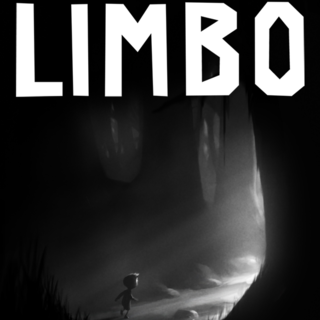In an era where bigger is better, Limbo is a delightful well-polished small diamond
Limbo is yet another platformer where you go from left to right, a constant journey from the beginning to the end, but here the concept of a stage is non-existent. The world of Limbo is only one, it is a finite yet long string of obstacles that feature an amusing blend between puzzle and platforming. There are no loading times, the game is one cohesive stage from beginning to end, as you go from forest to caves and from caves to an industrial site you watch as the environment slowly transforms and it all makes for a very unique and immersive experience as the game draws you into its darkness with amazing efficiency, it all feels uncomfortably real and believable and due to that Limbo becomes an absolute blast to play and let yourself drown into.
The controls are as simple as the color palette the game uses: you can move, jump and grab onto objects to interact with them, and that is it. The joy of playing Limbo comes from solving all of its puzzles and getting away from all of its traps one by one and moving on to see what is going to happen next. The puzzles go from straightaway block-pushing riddles to much more complex gravity-related obstacles that will appear down the line, and in total going from Limbo's starting point to its curious ending will take most players about four hours. However, the game has some nice achievements for those who are willing to do some extra exploration, something that is bound to extend the game's duration for a short while.
Limbo is not exactly a challenging game, but it requires a lot of patience from players as most of its puzzles are a trial-and-error process, since it is nearly impossible to fully grasp the nature of most of the puzzles at first glance; however, in a display of wonderful game design, Limbo features extremely well-placed checkpoints that stir the game away from frustration. Most of the time, you will be experimenting different solutions only to end up being killed in absolutely horrific ways, which despite being softened up by the fact that the game's shadowy silhouette, still end up being surprisingly gory for a game of this nature. The gory deaths are no coincidence, they are here to add to the looming threat hanging in the game's atmosphere and to tell players that even though Limbo has a cartoonish look to it, its world is a disturbing unforgiving place.
Given the compact nature of Limbo, developers had plenty of time to pay attention to detail, and they made sure to use it in a productive way. Every corner of Limbo adds to game's atmospheric vibe, and the game's visuals are no different. Obviously, the art direction the game took is quite unique and mesmerizes at first sight, but it is the animation that makes everything click together. Limbo is a slow moving game, and the way on which the shadow animations slowly progress in their very calculated, smooth and defined moves adds another layer of fright to this onion of creepiness. The same can be sad about the sound, which replaces music for very well-produced noise: the wind, the flapping of wings, the steps slowly advancing through the grass, everything comes off amazingly realistic and close to the players.
Could Limbo have used a few improvements here and there? Sure, why not. As atmospheric as it may be, the game loses a bit of its dark value once the character leaves the forest and steps into an industrial site, in a game that is so sensitive it is hard to pinpoint exactly why that happens, but it may be due to the fact that the strange kids that appear in the forest and tr to attack you through a big portion of the game's opening act simply disappear once the game gets to an area that should be supposedly more populated. Besides, the ending might end up leaving some questions out in the open that some players would have loved to see answered, but given how this successful and mathematically well-crafted game has been embraced by the gaming world, we could end up getting a sequel that sheds a light into some doubts. All in all, Limbo is one stunning piece of software, and in an era where bigger is wrongly taken as a synonym of better, it is delightful to see a small, but ridiculously polished adventure, shine bright.

